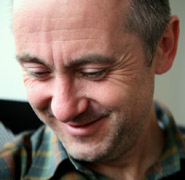The Fellowship of the Royal Society is composed of the most distinguished scientists from the UK, other Commonwealth countries and the Republic of Ireland. It is the highest accolade a scientist can receive, short of a Nobel Prize.
These latest awards bring to 33 the number of current Bristol academics whose work in the fields of science, engineering, technology and medicine has been honoured in this way – a remarkable total for a relatively small institution.
The Vice-Chancellor, Professor Eric Thomas, said: 'This is a personal triumph for Mike Ashfold and Jon Keating. It also reflects the University’s national and international excellence in research.'
Professor Keating first came to Bristol from Oxford University in 1985. He researched problems in quantum chaos and gained his PhD in 1989. After a period as a post-doc, he moved to Manchester as a lecturer, returning to Bristol in 1995 as a reader. For the next six years, HP Labs financed him and his research group. He became a professor at Bristol in 1997 and Head of the Department of Mathematics in 2001. From 2004 to 2009 he was an EPSRC Senior Research Fellow, and last year served on the applied mathematics panel for the Research Assessment Exercise. He is to become Bristol’s Dean of Science in August 2009.
Professor Ashfold was first appointed at Bristol in 1981, following postdoctoral research as a Guy Newton Junior Research Fellow at Oxford University. He was promoted to Reader in 1990 and Professor in 1992. He, too, is a past EPSRC Senior Research Fellow (1997-2002) and has been Head of Physical Chemistry in the School of Chemistry since 2002. His research interests span broad areas of gas phase and gas-surface chemistry, including the growth of thin films of diamond. He will become the next President of the Faraday Division of the Royal Society of Chemistry in July 2009.
Martin Rees, President of the Royal Society, said: ‘Our new Fellows are at the cutting edge of science worldwide. Their achievements represent the vast contribution science makes to society. They join an outstanding group of over 1,400 Fellows and Foreign Members of the Royal Society, and all rank among the international leaders in their field.’
The Royal Society is the world’s oldest scientific academy and has been at the forefront of enquiry and discovery since its foundation in 1660. Past and present members include Charles Darwin, Albert Einstein, Dorothy Hodgkin, Isaac Newton, Christopher Wren and Stephen Hawking.
Fellows of the Royal Society are elected for life and designate themselves through the use of the letters FRS after their names. Only 44 new members are elected each year.

